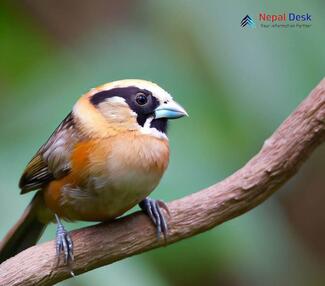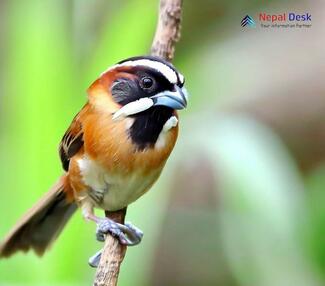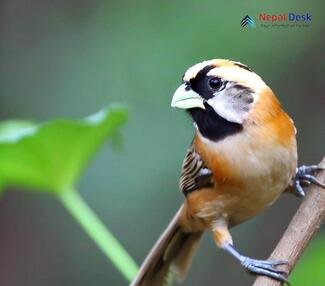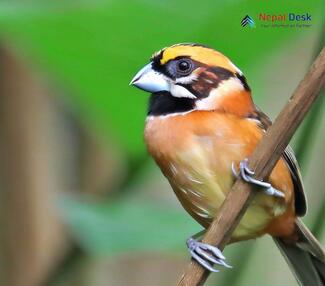Venturing into the heart of Nepal's rich biodiversity, one may encounter an intriguing and lesser-known bird species: the Black-throated Parrotbill (Suthora nipalensis). This small, captivating bird is sure to captivate birdwatchers and nature enthusiasts alike with its distinct profile and fascinating habits. In this section, we will delve into the fascinating world of the Black-throated Parrotbill and explore its unique characteristics.
Nepal's Natural Treasure: The Habitat of the Black-throated Parrotbill
Endemic to the eastern Himalayas, specifically in Nepal, Bhutan, and adjoining parts of India and southern China, the Black-throated Parrotbill thrives in subtropical or tropical moist montane forests. These lush habitats provide ample resources for the parrotbill to flourish. The undergrowth of these rich forests serves as their primary feeding ground where they can find a variety of insects and seeds.
An Eye-catching Profile: Physical Attributes of the Black-throated Parrotbill
The Black-throated Parrotbill boasts a truly distinctive appearance. Measuring a mere 11-12 centimeters in length, this compact bird displays a striking combination of colors and markings. The head features a strong blackish-gray hue that extends down to its throat, while its flanks and underparts are contrasted by warm buff tones. Arguably its most defining feature is the long, curved tail that adds an elegant touch to its overall profile.
Social Butterflies: Behavior and Social Dynamics
The Black-throated Parrotbill is known for its sociable nature. Often found in small flocks consisting of 6-20 individuals, they effortlessly navigate their environment with agility and precision. Their complex vocalizations contribute significantly to their social interactions and can be heard echoing throughout their habitat. The delightful whistling calls serve as a means of communication within their flock, assisting in coordination during foraging expeditions and alerting each other to potential threats.
Conservation Status and Future Outlook
Currently, the Black-throated Parrotbill is categorized as a species of "least concern" by the IUCN Red List of Threatened Species. However, this assessment should not discourage ongoing conservation efforts, as habitat loss and degradation remain potential threats given the rapid development occurring in the region. Preservation of valuable natural habitats not only safeguards this enigmatic bird but also all the endemic species that call the eastern Himalayas home.
Final Thoughts
The Black-throated Parrotbill (Suthora nipalensis) may be a lesser-known gem within Nepal's thriving biodiversity, but its unique profile and intriguing behavior make it a captivating subject for both bird enthusiasts and the curious traveler alike. As we strive to protect our planet's rich biodiversity, let us remember that even the tiniest creatures make an impact - and deserve our attention and efforts.




